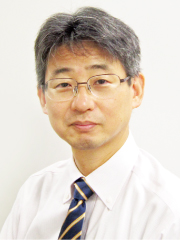学術変革領域研究(A)
神経回路センサスに基づく適応機能の構築と遷移バイオメカニズム(適応回路センサス)
このたび、2021度から2025年度までの5年間、科学研究費助成事業(科研費)の学術変革領域研究(A)として、「神経回路センサスに基づく適応機能の構築と遷移バイオメカニズム」(適応回路センサス)の研究領域を推進する運びとなりました。ヒトを含む動物は、個体内外の状況の変化に随時適応し、生き抜くための行動をとります。この行動適応は多数の神経細胞からなる複雑な神経回路の構築と遷移(適応回路)により実現されます。本研究領域では、適応脳機能を担う回路構築と回路遷移の仕組みの解明に狙いを定め、先鋭的な神経回路活動の計測・操作技術と網羅的な遺伝子発現の解析技術を大胆に組み合わせて、個別の構成細胞がどのような固有の特性や挙動を示して適応脳機能に至るのかを包括的に追跡します (適応回路センサス)。この適応回路センサスに基づき、適応回路の構築・遷移ダイナミクスを示す責任回路を絞り込み、理論的に動作原理を考証することにより、脳の本質である適応現象を新次元の視点で探る学問領域を創成することを目指します。
神経科学の分野は、多数の神経細胞の活動を光学的に観測し操作を加える先端技術の導入により劇的な発展を迎えつつあります。しかしながら、多くは専ら単一の細胞型マーカーや特異的プロモーターを利用したものであり、同種の神経細胞群の平均的な性質を理解するに留まっています。適応回路の本質に迫るためには、神経細胞一つひとつの挙動を個別に追跡して観測できる革新的技術の登場が待ち望まれていました。近年、微小サンプル操作と次世代シーケンシングを融合し、個別の生体細胞の遺伝子発現を網羅的に解析するシングルセルRNAシーケンシング(scRNA-seq)などの革新的な単一細胞プロファイリングが大きなブレークスルーを巻き起こしています。もともと脳神経系は多種多様な個性を持つ神経細胞が協調的に機能する組織であるため、いったん研究の狙いを定めて単一細胞プロファイリングを有効に活用すると、従来の技術的限界を突破して新次元の神経科学を創出できる潜在力を有しているといえるでしょう。本研究領域では、これら二つの学問潮流を融合させて、適応回路の仕組みを単一細胞レベルの解像度で解き明かす学際的研究を強力に推進します。そのために、最前線の神経科学はもちろん、ゲノム生物学、情報生物学、行動解析学、神経計算論など異分野の研究者が結集して連携体制を組み、若手・中堅研究者の挑戦的な発想を起爆剤として、既存の枠に収まらない次世代の神経科学を開拓し世界に発信します。
本研究領域の研究成果は、適応回路の基礎的研究の進展に留まらず、精神神経疾患の原因回路を狙った副作用の少ない治療法の開発や、脳に学んだ省電力性と耐ノイズ性の高い人工知能やロボティクスの開発などに幅広く役立つことが期待されます。

領域代表者
礒村 宜和
(東京科学大学・教授)

